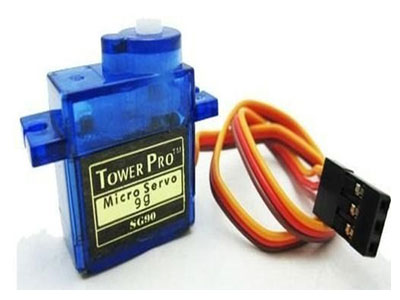How Servo Drive Vary The Speed Of Servo Motor?
Key Takeaway
A servo drive varies the speed of a servo motor by adjusting the frequency and voltage of the electrical power supplied to the motor. One common method is using pulse width modulation (PWM) signals. PWM involves sending electrical pulses of varying widths to the servo motor. By modifying the pulse width, the average voltage applied to the motor changes, which in turn adjusts its speed.
The servo drive receives commands from a controller and translates them into PWM signals. These signals control the motor’s speed by increasing or decreasing the duration of the pulses. This allows for precise control over the motor’s speed, enabling smooth and accurate movement essential for applications requiring high precision and reliability.
Basic Principles of Speed Variation
Servo drives control the speed of servo motors by varying both the frequency and voltage of the electrical power supplied to the motor. When a command signal indicating the desired speed is received by the servo drive, it adjusts the output frequency to match this command. This involves complex algorithms and real-time feedback mechanisms to ensure precise speed control. The relationship between frequency and motor speed is direct: higher frequencies increase the motor’s speed, while lower frequencies decrease it. Additionally, voltage adjustments help in maintaining the torque required for various loads. By fine-tuning both frequency and voltage, servo drives can make very precise speed adjustments. This capability is crucial for applications where high precision and smooth operation are essential, such as in CNC machines and robotic arms.

Control Techniques for Speed Variation
Several control techniques are used to vary the speed of servo motors:
Proportional-Integral-Derivative (PID) Control: This is the most common method, combining proportional, integral, and derivative actions to maintain the desired speed. The PID controller adjusts the motor speed based on the difference between the desired and actual speed, correcting any deviations in real-time.
Field-Oriented Control (FOC): Also known as vector control, FOC is used primarily for AC servo motors. It controls the motor’s magnetic field to achieve high performance and efficiency, allowing for precise speed regulation even at low speeds.
Direct Torque Control (DTC): This advanced technique directly controls the motor’s torque and magnetic flux, providing fast response and precise speed control. DTC is often used in high-performance applications where rapid speed changes are required.
Adaptive Control: This method adjusts control parameters in real-time to adapt to changing conditions. It is particularly useful in environments with variable loads and external disturbances, ensuring consistent speed control under varying conditions.
Tools and Software Used
Effective speed control of servo motors requires specific tools and software:
Servo Tuning Software: Many manufacturers provide proprietary software tools to help tune servo drives. These tools allow users to adjust PID settings, view real-time feedback, and monitor performance, ensuring optimal speed control.
Programming Interfaces: These include PLCs, microcontrollers, or dedicated servo controllers with user-friendly programming environments. They enable precise configuration and control of the servo drive.
Diagnostic Tools: Tools such as oscilloscopes and multimeters are essential for diagnosing and troubleshooting speed control issues. They help ensure that the drive and motor operate within the desired parameters.
Real-Time Monitoring Systems: Advanced monitoring systems provide continuous feedback on the motor’s performance, allowing for real-time adjustments and ensuring consistent speed control.
Examples of Speed Variation in Action
Servo drives’ ability to vary motor speed is demonstrated in numerous applications:
CNC Machinery: In CNC machines, servo drives control the speed of cutting tools, enabling precise machining operations. Adjusting the tool speed ensures high-quality cuts and extends tool life.
Robotics: In robotic arms, servo drives vary the motor speed to achieve smooth and precise movements. This is crucial for tasks like assembly, welding, and painting, where speed adjustments ensure accuracy and repeatability.
Conveyor Systems: In manufacturing and logistics, conveyor systems use servo drives to control the speed of conveyor belts. This ensures synchronized movement of materials, improving efficiency and reducing the risk of bottlenecks.
Textile Machinery: Servo drives in textile machinery adjust the speed of spinning and weaving operations, ensuring uniform fabric quality and reducing material wastage.
Best Practices for Speed Control
To achieve optimal speed control with servo drives, consider the following best practices:
Proper Tuning: Spend time tuning the control parameters, particularly the PID settings, to match the specific requirements of your application. Proper tuning ensures smooth and accurate motor performance.
Regular Maintenance: Perform routine checks and maintenance on both the drive and motor. This includes cleaning, inspecting connections, and verifying feedback accuracy to prevent issues that could affect speed control.
Environmental Considerations: Protect the servo motor and components from extreme temperatures, dust, and moisture to prolong their lifespan and maintain consistent performance.
Documentation and Training: Keep detailed records of the drive and motor specifications, installation, and any adjustments made. Ensure that personnel operating the system are well-trained, reducing the risk of errors and improving overall system reliability.
Conclusion
Achieving precise speed control with servo drives involves a comprehensive understanding of the fundamental principles of speed variation, the implementation of effective control techniques, and the use of the right tools and software. Engineers must master these elements to ensure that their servo systems operate efficiently and reliably. This knowledge is particularly crucial in applications such as robotics, CNC machinery, and other fields requiring precise motion control, where effective speed variation is essential for high performance and accuracy.
To achieve the desired speed with servo drives, proper setup and regular maintenance are critical. Fine-tuning the system through adjustments and continuous monitoring ensures optimal performance. Additionally, adhering to best practices in servo drive configuration and operation helps meet the demanding requirements of modern industrial applications. With diligent application of these principles, servo drives can deliver consistent, high-quality results, enhancing the overall efficiency and productivity of industrial processes.
